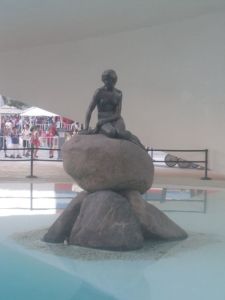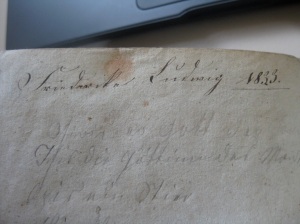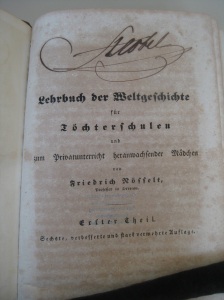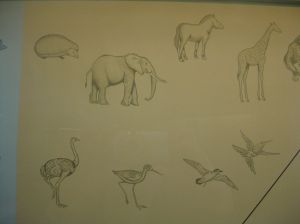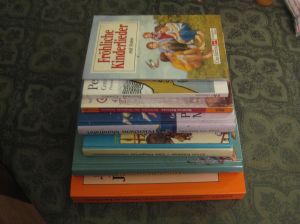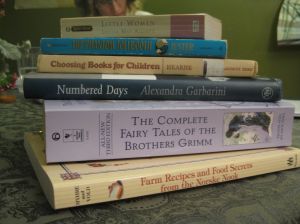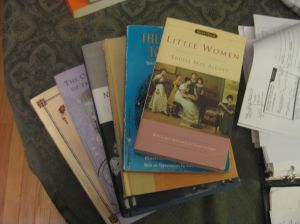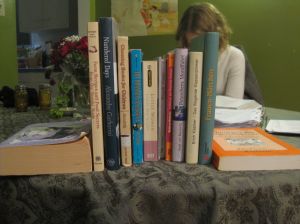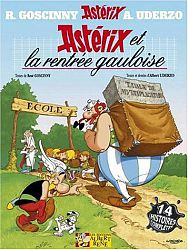I didn’t plan to return to my blog after a long absence with this subject. But then, nothing about Steve Bodner’s death on Monday night/Tuesday morning was expected. A teacher and musician I adored in college and an inspiration for my teaching, he has become a good friend—for which I’m enormously grateful.
There are already a number of fora for reflections on Steve’s life. One of the most moving for me is a short piece by another beloved friend, my voice teacher Keith Kibler. Steve is notorious for writing book-length program notes and emails after concerts, so I think he would forgive me indulging myself here with a few thoughts about losing him.
reflections
I’m struggling with time. I’m necessarily considering experiences or events in the past, even habitual characteristics of Steve’s from my time at Williams College, which was now almost four years ago. But my feelings about Steve are current, and an imperative to speak of them or of him in the past tense feels wrong and cruel.
There is an incredible aspect of this death that I think is fair to say is not always primary with the loss of loved person. The unrealness of Steve’s sudden illness is inescapable.
Being in Germany, I’m especially struck by the strangeness of how a catastrophe is contained and shared in our most modern world. I found out about Steve’s death through email and Skype; I spent yesterday grieving with friends six, seven, eight time zones away in too many media to count and listening to recordings of Williams music groups on my laptop; the Facebook has become the primary outlet for sharing remembrances of Steve. And yet, it’s somehow still not enough, as I find myself thinking that being in Massachusetts would ease the sadness, wishing that among the concert recordings there were any clips of Steve talking, and regretting that I wasn’t in better touch this year (exchanging dreadful renditions of popular Christmas songs on YouTube doesn’t quite suffice).
Even in the last 24 hours, I feel like I have a closer understanding of why so much of human art, philosophy, literature, thought is concerned with describing, categorizing, and analyzing our reactions to death. The emotions are so complicated and diverse, even in the first moments of discovering a loss. I seem to have about 14 different feelings at any given moment.
guide
Some telling patterns are already emerging in people’s comments and memories about Steve. (Obviously I can’t speak to the part he plays in the hearts of his family and friends who knew him best and longest, but the student perspective is remarkably consistent): there are many loving descriptions of how Steve’s enthusiasm and generosity compelled us to be involved in his mad schemes, coming to love new music with him that would have eluded many of us otherwise.
I’ve tried to distill some of the qualities that I think make Steve’s music educating and conducting, superficially different work from the study of history, such an admirable model for me as a teacher and as a person. (I’ve also tried to make the preceding sentence less inappropriately stuffy, but it won’t happen.)
- Steve had a deliciously sarcastic and irreverent side, but he always treated his students with great warmth. He had a special way of making each musician feel like the most significant member of the ensemble. His devotion to our learning and friendship carried on well after graduation.
- Steve famously and intentionally has always pushed student musicians beyond their supposed limits. This ambition came from a genuine pedagogic principle, i.e. “We don’t grow by playing ‘Twinkle, Twinkle…..’!” But he always pushed with compassion, writing once after a difficult rehearsal
“I have too much respect for all of you as musicians and as people to let you simply settle for what you ‘can do.’ To be honest, I have little pedagogic interest in what you ‘can do’ already — I am interested in what you are capable of — and even more, I am interested in what you do not even know you are capable of yet!”
- For my part, I’ve often been frustrated by a blinkered assessment of our students as incapable—of independent research, of creative thinking, of collaboration, of precise writing—when even as a new teacher, I’ve already seen how much more exciting and productive students’ work is when big things are asked of them. Our aspirational performance of John Adams’s Grand Pianola Music my senior year was certainly not note-perfect, but Steve helped us make it much more than that.
- Another warm quirk is Steve’s commitment to the first person plural for all his critiques and teaching. This sometimes led to funny sentences, like an exhortation for the singers that “we” breathe earlier. But it revealed the deep sense of community which Steve cultivated among his students, that our learning and our music-making alike were ensemble activities above all.
- Steve never let his curiosity and enthusiasm be contained by the tyranny of his students’ or institutional tastes. He brought us authentic, challenging new music without ever needing to pander to traditional (tragic) band repertoire, but there was also an accessible philosophical idea or story which organized his programming. In what other place would I (as a singer) have become so connected to the wind ensemble? Certainly Steve’s radical challenges to musical/pedagogic authority could be a rallying call for my field, also.
- And very importantly, I hope that I might form such meaningful and lasting friendships as Steve has with his students, such supportive relationships with his colleagues.
closing
Steve loved finding pithy (or not so pithy) quotations relevant to a particular situation. I was quite pleased when he once forwarded a John Dewey comment on art from me to the current SymphWinds group. So, to close, here are 3 that seem right at the moment, drawn from old messages Steve wrote to SymphWinds:
Nothing is better than music. When it takes us out of time, it has done more for us than we have the right to hope for. (Nadia Boulanger)
You could see art, artistic creation, as a soup constantly simmering in a cauldron. The taste of the soup depends on what you have put in it; the broth simmering over the fire is the artist’s potential and what you put into it are the experiences. (Gyorgy Ligeti)
Music can name the unnameable and communicate the unknowable. (Leonard Bernstein)


